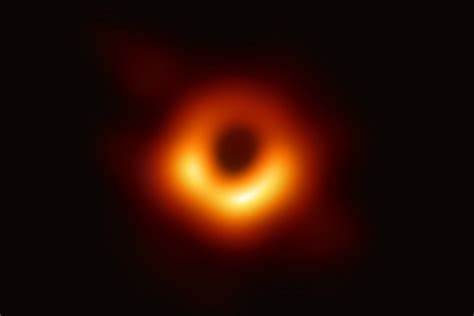Our first view of a black hole
人类首张黑洞照片问世!
They are considered as one of the most mysterious objects in the universe. We knew they existed, and that they swallowed up everything around them, but it was on April 10 that we finally got to see a black hole in a photograph.
它们被认为是宇宙中最神秘的物质之一。我们知晓它们存在并吞噬着周遭的一切,但直至4月10日,我们才在一张照片中看到了黑洞。
According to the Guardian, the picture shows a halo of dust and gas at the heart of the M87 galaxy, 55 million light-years away from Earth.
据《卫报》报道,该照片显示的是一个由尘埃和气体组成的光环,其位于星系M87中心,距离地球5500万光年。
As Time put it, the picture may "open one more tiny crack" onto the secret of the universe.
正如《时代周刊》所言,这张照片或许在宇宙的谜团之上“打开了又一道细小的裂缝”。
However, the photo doesn't show a black hole itself. That's because a black hole, with its great density, produces such a powerful gravitational field that nothing – not even the light – can escape its pull. It's only when surrounding objects, like gas, dust, stars and light are sucked into one, that it is possible to get a photograph.
但这张照片并未展现黑洞的样貌。因为密度巨大的黑洞能够产生强力的引力场,一切物质 —— 乃至光线 —— 都无法逃离其引力。只有当气体、尘埃、恒星、光线等周遭物质被吸入黑洞时,才有可能拍到一张黑洞的照片。
Though the picture just outlines the black hole, getting and showing it to humans are still not simple.
尽管这张照片仅仅描绘出了黑洞的大致轮廓,捕捉这张照片并公之于众也并非易事。
The first challenge lay in the remoteness of the black hole. Trying to get the photo was like "trying to spot an orange on the surface of the moon with the naked eye," Time reported.
第一个挑战便是和黑洞之间的遥远距离。据《时代周刊》报道,拍摄这张照片就像“试图用裸眼在月球表面发现一个橘子”。
In order to solve this problem, astronomers placed eight observatories in four continents. This global approach was key to getting the picture.
为了解决这一问题,天文学家们在四大洲上设立了八个观测站。这个全球性的措施是拍摄该照片的关键。
The collection of the data was completed in barely a week, but the analysis of it took the better part of the past two years.
数据的收集工作在不到一周的时间内便完成了,但分析工作却占据了过去两年间的大部分时间。

Due to the telescopes in the different places, scientists couldn't share the information they collected with each other and only stored it independently. It wasn't easy to bring together these huge amount of data. The process involved transferring the data to different computer groups in order to produce the final image.
由于望远镜都分布在不同的地点,科学家们无法与彼此分享收集到的信息,只能将信息独立地储存起来。汇聚这些大量的数据也并非易事。这一过程包括了将数据传输至不同的计算机组,从而获得最终的影像。
The final image is a big deal. As the Guardian noted, "it predicts a revolution in our understanding of the universe's most enigmatic objects."
最终的影像非同小可。正如《卫报》所指出的那样:“它预测了一场我们对于宇宙最神秘的物质的认知革命。”
One day, if we can uncover their secret, humans might "use black holes to time travel forward", according to National Geographic. We may be able to find out what the world will be like in the future.
《国家地理》杂志认为,如果我们有朝一日能够解开黑洞的秘密,人们或许能“利用黑洞前往未来”。我们或许能够找出未来世界的样子。












